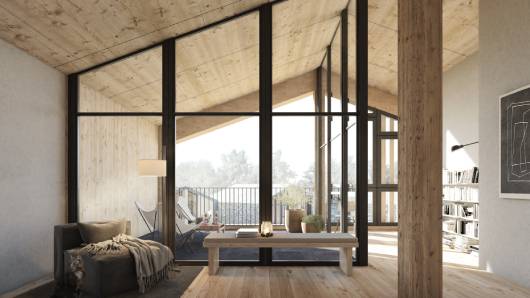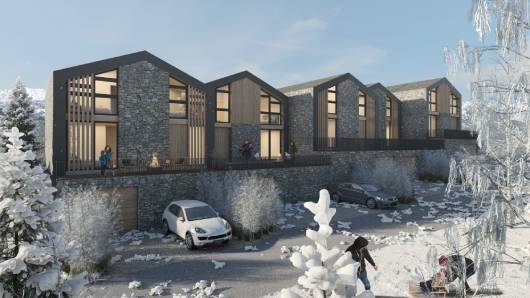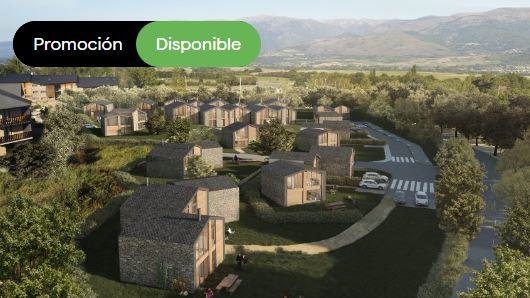What are Passivhaus houses? The benefits of living in a passive house

In recent years, the ‘passive house’ concept has spread . Concern about rising energy prices, growing environmental awareness and regulations aimed at a more sustainable construction have all played a part in this expansion. It should be remembered that buildings consume 40% of energy in Europe and generate 36% of CO2 emissions, the main cause of climate change. Hence, for the decarbonization of the sector, solutions are needed to reduce pollution.
What is a passive house?
A passive house is a type of house designed and built to take advantage of the resources of bioclimatic architecture, such as orientation, sunlight or existing vegetation. They are houses with very low energy consumption, which offer a comfortable temperature all year round without the need to resort to conventional heating or cooling systems. An interesting fact to learn more about the history of passive houses is to read the book La casa pasiva: Clima y ahorro energético (The Passive House: Climate and Energy Saving).

What is Passivhaus certification?
From there, the most developed and widespread passive construction system in the world is the Passivhaus certification. This German standard establishes a series of principles for approaching the construction of a building with the aim of achieving a high level of indoor comfort with very low energy consumption, up to 75% less than usual.
Certain requirements must be met:
- Bioclimatic design.
- A high level of insulation for exterior walls and roofs.
- Elimination of thermal bridges.
- High sealing values of the enclosure.
- Installation of a mechanical ventilation system with heat recovery.
- High performance windows and doors.
- Sun protection.
In order to be certified as Passivhaus, among other aspects, the house must comply with a series of values related to energy efficiency: heating and cooling demand lower than 15 kwh/m²a; primary energy demand lower than 120 kwh/m²a) in heating, hot water and electricity. This is for a Passivhaus Classic home. The Plus and Premium versions of the recognized certification are even more demanding in terms of energy demand reduction and renewable energy sourcing.
The benefits of having a passive house
Among the main benefits of passive houses are substantial energy savings and thermal and acoustic comfort for their inhabitants. They are homes with a uniform temperature in all rooms. Being houses of superior quality, with proven energy efficiency and comfort, they represent a differentiation in the real estate market and an economic asset that is revalued above the average. The low energy demand of passive houses means that it can be met easily through the installation of renewable energy, thus contributing to the decarbonization of the environment.

Renewable energy systems used in passive houses
There are several renewable energy options available for domestic use in passive houses. The choice of one or the other will depend on the energy needs and the geographic location of the home. The most common is an aerothermal system, a technology that uses a heat pump to generate energy from the air in a clean and efficient way. Its main use is for air conditioning and domestic hot water. The installation of panels for self-consumption of photovoltaic solar energy is another of the most common and interesting options at the moment.
Pleta Bedoll, a sustainable construction
In short, the passive house, according to the Passivhaus standard, is the construction of the present and of the future if what you want are houses in which to live better -with greater comfort and well-being- with less energy. Our proposal for sustainable construction, in the Pleta Bedoll development, located in the heart of Cerdanya, adds to the Passivhaus criteria of energy efficiency the use of natural and ecological materials or of sustainable origin, respectful of the environment and people’s health.

Wood is the most sustainable building material in existence; the only one that is plant-based, natural, renewable, recyclable and reusable. Its responsible use encourages the maintenance and growth of forests, which contribute CO2 and are the main carbon sinks. Even once converted into building products, it continues to trap emissions in buildings. For this reason, wood is called upon to play an important role if we are to achieve global decarbonization goals.
If to the use of sustainable building materials such as wood we add the adoption of the Passivhaus standard when designing and building a house, which guarantees minimum energy consumption throughout its useful life, we will be providing a useful and proven solution to the need to act to halt climate change.


